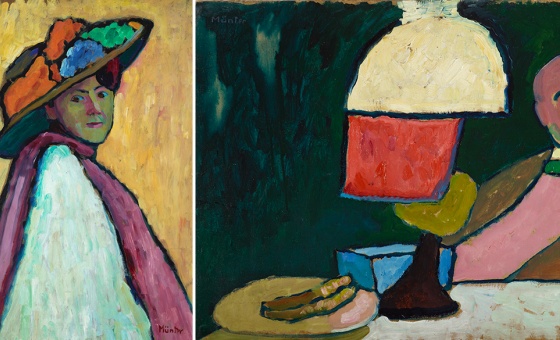This is the last article you can read this month
You can read more article this month
You can read more articles this month
Sorry your limit is up for this month
Reset on:
Please help support the Morning Star by subscribing here
THE Israeli “war” against Palestinians fills all our minds at present. It brings to mind, nevertheless, that Israel’s colonisation project is a war against nature — an ecocide as well as a genocide.
Palestine-Israel is mostly an arid land, from which the forests have been almost cleared in the 9,000 years since crop growing began in the Fertile Crescent. That makes us presume that it must be a de-natured, barren land. That couldn’t be more mistaken. Palestine is a land of very great biodiversity and ecological continuity.
Palestine, historically free from extreme glaciation and desertification, lies at the biodiverse junction of Europe, Africa and Asia, and lies on the most important of the three flyways that migratory birds use between Africa and Eurasia (the others being through Italy and Spain).
Palestine is home to some 4,500 native plant species (Britain has 1,700), some 116 native mammals (Britain has 49), some 100 native reptiles (Britain has six), and on and on.
The exquisite Faqqua Iris and the Palestinian Iris, anemones, tall white asphodels, field chrysanthemums and blue sage graced the green springtime pastures of the Bedouin shepherds. Cyclamen grew in every nook and cranny of the farmers’ built and laboriously maintained terraces.
The elegant Mountain Gazelle and the jewel-like Palestine Sunbird symbolise such riches — with Cream Coloured Coursers, Caracal cats, jerboas, White Throated Kingfishers, ibex, hyrax, porcupine, Long Billed Pipit, mongoose, fruit bats, jackals and hyenas.
Yet even before the current Israeli atrocity-war most of these wildlife resources were subject to horrendous loss and damage, particularly since 1967 from settlement development on the high hills of the West Bank and on the Jordan valley lands, and from intensive agriculture on the coastal plain.
Springs were sealed off and concreted over. Aquifer water was systematically stolen from the Palestinians, and their water infrastructure — wells, pipelines, reservoirs — was damaged and stolen. Israel has monstrously ratcheted up all these crimes since the catastrophic Hamas-led breakout from the Gaza “open-air prison” on October 7.
Even before October 7, some 97 per cent of besieged Gaza’s water was unfit for human consumption, and since then water consumption has fallen below two litres per day for many, not enough even to sustain life.
Internationally famous for its migratory birds and rich riverine wildlife, the Unesco-recognised Wadi Gaza nature reserve that transects Gaza for nine kilometres had already, as a result of the Israeli blockade since 2007, collapsed into a disease-ridden sump.
Inflowing untreated wastewater brought parasitic and infectious diseases to the communities neighbouring it. Since then, the internationally backed restorative plans for the Wadi have collapsed in the face of the current Nakba.
While at least a quarter of the Gaza population is starving, Israel systematically bulldozes orchards, greenhouses, farmland and irrigation infrastructure in both north and south Gaza — land that grew potatoes and a host of vegetables, citrus and cactus fruits.
While Palestinians starve no-one can expect wild mammals and large birds to survive. Edible native species like cape hares and desert hedgehogs, waders, plovers and even smaller birds will be gone.
On the West Bank Israel has fragmented the hills with Israeli-only apartheid roads and hilltop settlements, and bisected them with the giant segregation wall. Olives, carobs, oaks, Palestine strawberry trees and other fruit and nut-bearing trees are systematically uprooted.
The whole of the Jordan Valley slopes and bottomlands as far as the river have been declared a Segregation Zone to exclude Palestinians. The zone is now crowded with Israeli military bases, Israeli settlements and intensive farmlands.
This Eastern Segregation Zone is also packed with “nature reserves.” These nature reserves do not coincide with the most biodiverse areas of the West Bank. They serve, rather, as another planning tool to deprive Palestinians of their land, water resources, homes and services.
Post-1948 Israel used a similar “soft” conservation tool of forest planting to systematically eliminate the cultural memory of more than 180 Palestinian villages and their farmlands that were ethnically cleansed and destroyed in the 1948 Nakba.
Planted with non-native eucalyptus, pines and cypress, these forests acidified the soil, consumed large amounts of water and dried up biodiverse springs and swamps. They threaten local ecosystems and rare species such as the Black Iris and the endemic and critically endangered Fringe-Fingered Lizard.
Lacking the resilience of local trees, like Mediterranean Oak and Terebinth, these planted colonial forests are readily lost to global warming’s wildfires, as they were in the enormous 2010 fires in Mount Carmel’s forest.
New Jewish National Fund forests are planted in the arid scrublands of the Negev, home to many rare animals — sandgrouse, rock hyrax, gazelle — and wildflowers — phlox, fritillary, tulips — while the villages of Bedouin graziers are bulldozed again and again by Israeli security services on behalf of zionist settlers.
Some 25 years ago Ramallah human rights activist Raja Shehadeh, his wife Penny and their close friends decided to go on a “sarha” (a Palestinian Arabic word for a “walkabout”) eastwards from the West Bank hills down the long Wadi Qelt to Jericho, on the Jordan plain.
Wadi Qelt is a place of gushing springs and bubbling streams, fish, water snakes, water birds, water mint and reed beds. (This walk is described in Raja’s book Palestinian Walks).
In the middle of their long walk, they met a family of Bedouins who were clinging on at that place after most of their community had been forced to leave. The family made them a meal, and Fatmeh, their host, told them that her husband had been working for the Israeli Society for the Protection of Nature.
His employment and housing were about to end because the area was to be taken over by the expanding nearby settlement and fenced off so that only Israeli Jews and tourists would be allowed access. There would be no further need for a Bedouin employee to ward off Arab shepherds or walkers. The family would have to leave too.
“This left me wondering,” writes Raja, “from whom the Israeli Society was trying to protect nature.” As Raja’s friend said: “The Israeli plan is to confine all of us in reservations in preparation for our eventual expulsion. Just as they did in 1948.”
The front page of the website of the Society for the Protection of Nature in Israel proclaims that it “Stands in Solidarity with all of Israel during Israel’s National Emergency” and it pictures its work hosting internally displaced Israeli families who have moved away from the Gaza border.
There is no up-front mention that I could see of Palestinians and no mention of the genocide taking place on the other side of the border fence.
By contrast, the front page of the website of the Palestine Wildlife Society has a picture of a Palestinian — his face covered in bomb dust — carrying five infants through bombed-out buildings, under a picture of a farmer with a donkey cart loaded with green forage.
The website says: “migratory birds know no boundaries.” Our solidarity should have no boundaries either.
Join the next national demonstration in London for an end to the Israeli genocide-war. It is on Saturday January 13.
In the words of the Palestine Wildlife Society’s 1999 founding slogan, we must stand “Together for Humans and Nature.”










